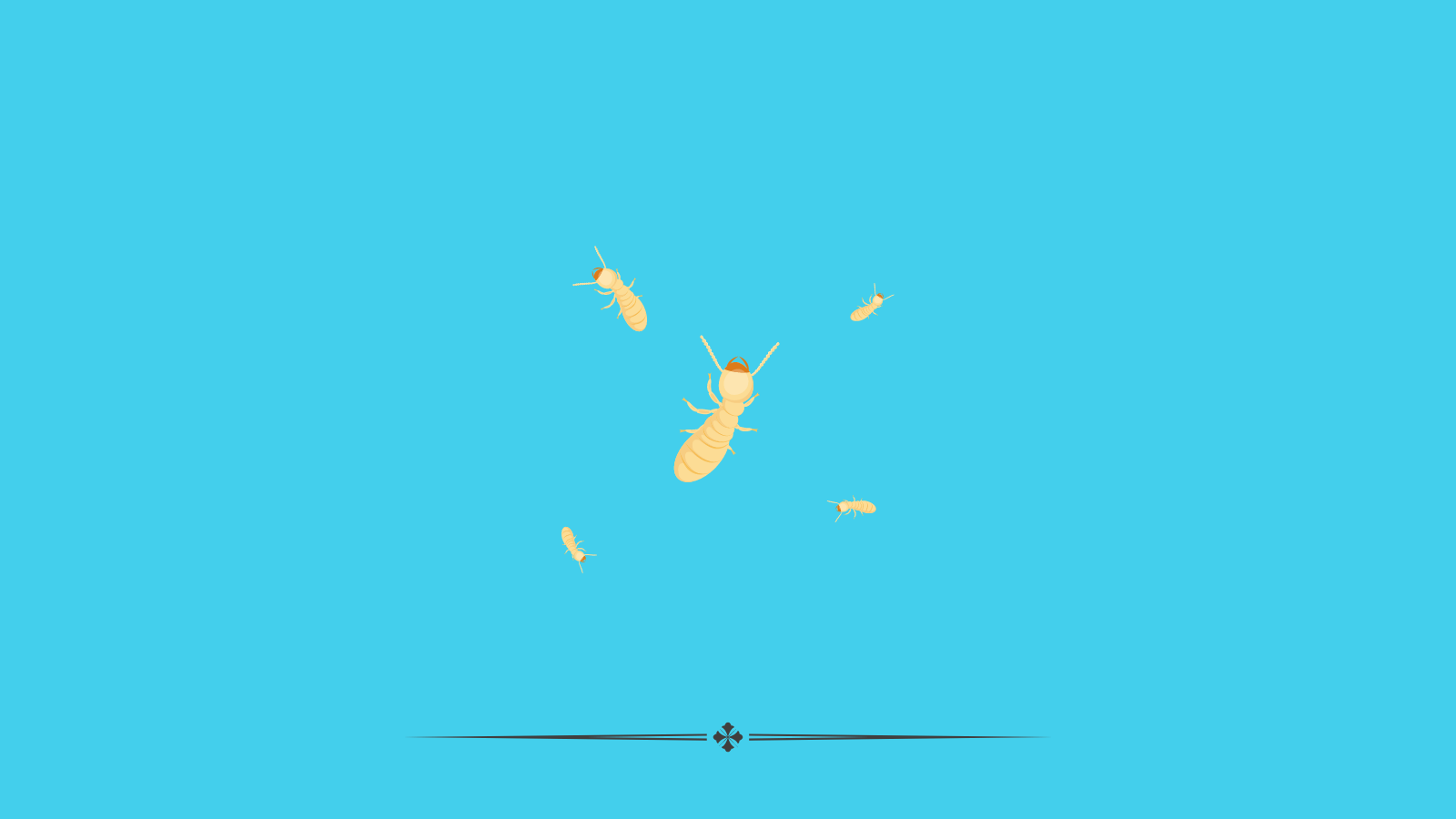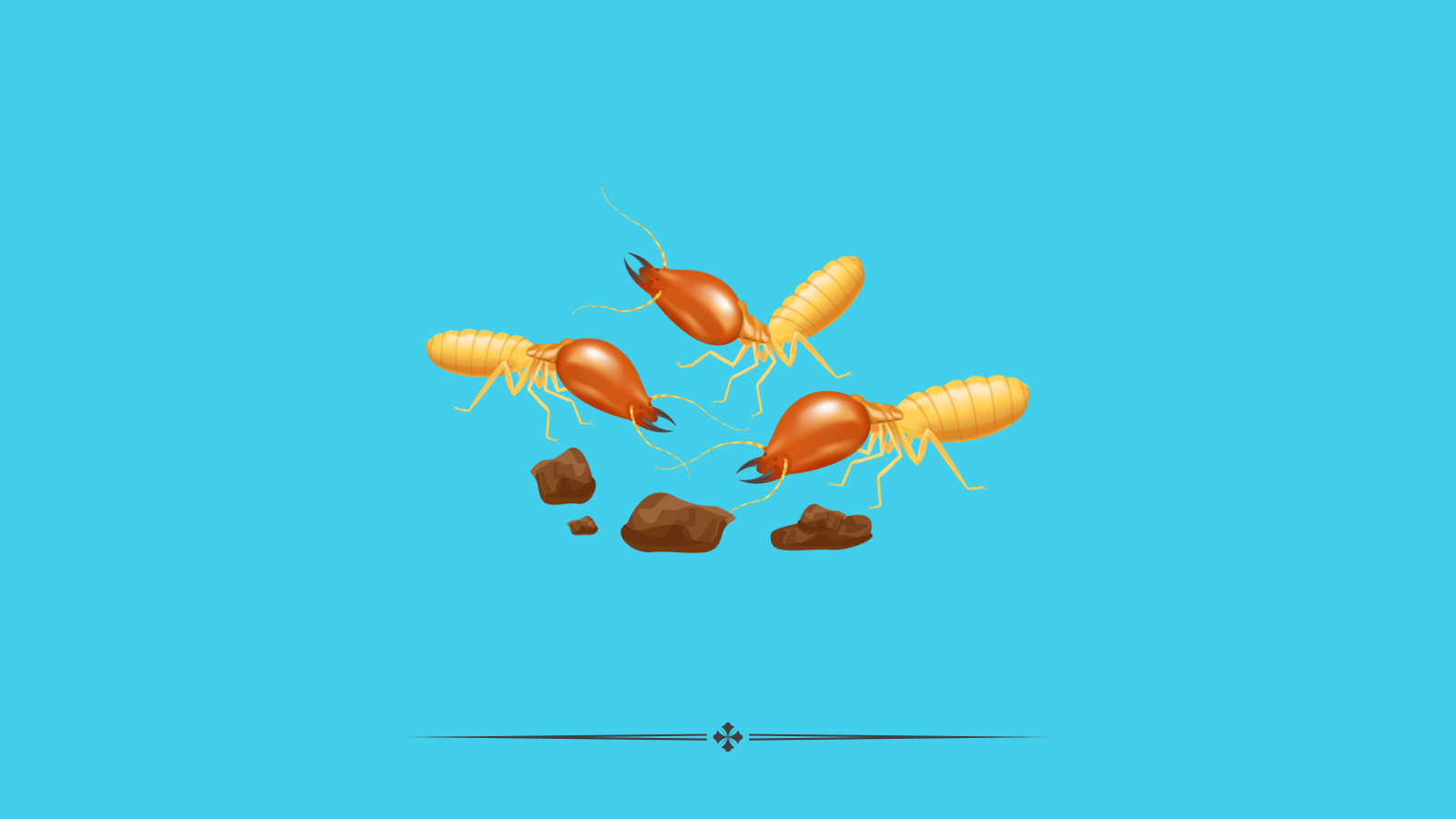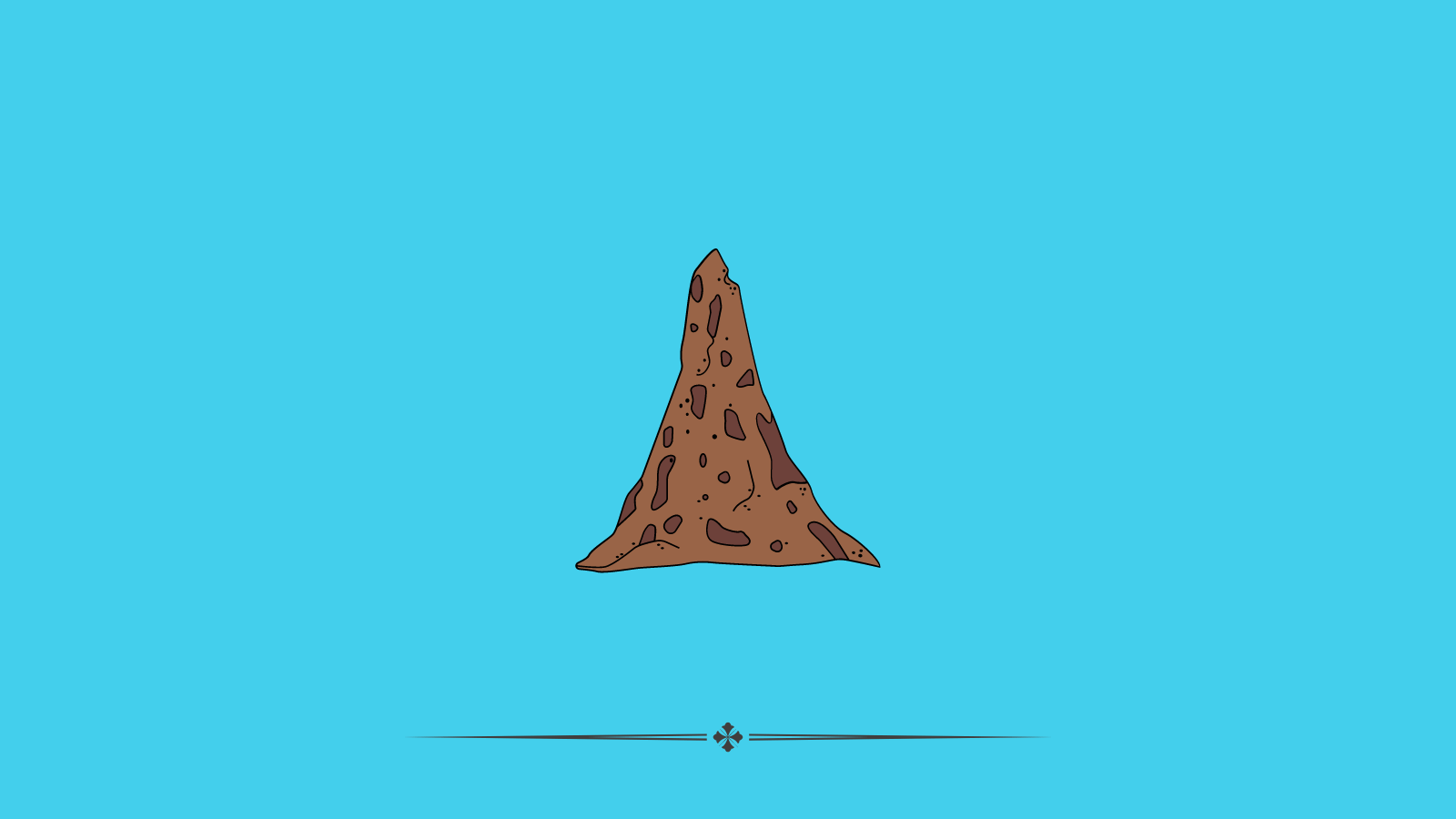Termites in Your Organic Garden – What to do
Gardening organically is not just a hobby; it’s a commitment to nurturing nature in the most natural way possible. This practice promotes biodiversity, supports local ecosystems, and produces wholesome, chemical-free produce. However, even the most idyllic garden can face challenges, one of which is the presence of termites. While termites play a crucial role in the ecosystem by breaking down dead wood and recycling nutrients, their presence in your garden can sometimes lead to significant damage.
Termites are often misunderstood creatures. While they are essential for the health of our ecosystems, they can become pests when they threaten the structural integrity of our garden plants and infrastructure. Understanding these insects’ behaviors, lifecycle, and the specific impact they can have on your organic garden is the first step in managing them effectively.
This blog post delves into the world of termites in an organic garden setting. We’ll explore how to identify termite activity, understand their impact, and most importantly, manage their presence using methods that align with organic gardening principles. Whether you’re a seasoned gardener or new to the organic movement, this guide will equip you with the knowledge and tools to protect your garden from unwanted termite damage, all while maintaining your commitment to organic and sustainable practices.
Chapters
What Are Termites?

Termites are small, eusocial insects typically grouped in the taxonomic rank of infraorder Isoptera, or as epifamily Termitoidae within the cockroach order Blattodea. This means they are closely related to cockroaches, having diverged from a common ancestor around 150 million years ago. Termites are often mistakenly called “white ants,” though they are not closely related to true ants.
Characteristics of Termites
Termites are known for their distinct appearance and social structure:
- Body Structure: They generally have a soft body and are usually white or light in color, which gives them their common nickname “white ants.” Unlike ants, termites have a relatively straight body without the narrow waist that ants exhibit.
- Social Structure: Termites live in highly organized colonies that can range from a few hundred to several million individuals. A colony is usually divided into castes based on the roles—workers, soldiers, and reproductive individuals (kings and queens). Each caste performs specific functions vital for the colony’s survival.
Ecological Role
Termites play a crucial role in the environment:
- Decomposers: They feed primarily on cellulose, an organic fiber found in wood and plant matter. By decomposing dead and decaying wood, termites recycle nutrients back into the soil, aiding in nutrient cycling and soil formation.
- Soil Engineers: Their digging and tunneling activities help aerate the soil and increase its fertility.
Habitat and Distribution
Termites are found in most parts of the world, but they thrive particularly in warm, humid climates. They are most populous in tropical and subtropical regions where they build elaborate nests—some are mounds that can reach heights of several meters, while others are constructed underground or within wood structures.
Impact on Human Activities
While termites are beneficial to the ecosystem, they can pose significant challenges when they interact with human structures. They are notorious for causing extensive damage to wooden structures, including houses and furniture, leading to costly repairs and structural failures in severe cases. That is why many people opt-in for effective termite pest control. Especially in their homes.
Understanding these facets of termite biology and ecology is essential for effective management, especially in settings where they impact human activities, such as in gardens and homes.
What are Types on Termites in the USA

In the United States, several types of termites are prevalent, each with distinct behaviors and habitats that influence how they impact residential and garden areas. The most common types are:
1. Subterranean Termites
- Description: Subterranean termites are the most widespread and destructive termite species in the USA. They build their nests underground and create mud tubes to access food sources above ground.
- Species: The Eastern Subterranean Termite (Reticulitermes flavipes) is the most common, but other species include the Formosan Subterranean Termite (Coptotermes formosanus) and the Western Subterranean Termite (Reticulitermes hesperus).
2. Drywood Termites
- Description: Unlike subterranean termites, drywood termites do not require contact with the soil and can establish colonies solely within pieces of wood. They consume wood at a slower rate than subterranean termites but can still cause significant damage over time.
- Species: The most common species is the Western Drywood Termite (Incisitermes minor), which is prevalent in the southwestern states. Another notable species is the Southeastern Drywood Termite (Incisitermes snyderi).
3. Dampwood Termites
- Description: Dampwood termites are larger than other types and prefer wood with high moisture content. They are less likely to invade homes because they do not thrive in dry conditions.
- Species: The Pacific Dampwood Termite (Zootermopsis angusticollis) is common along the Pacific coast, from California to Alaska.
4. Formosan Termites
- Description: Often referred to as “super termites,” Formosan termites are a type of subterranean termite but are noted for their aggressive nature and large colony size. They are capable of consuming wood at a rapid pace.
- Species: The Formosan termite (Coptotermes formosanus) itself is often distinguished from other subterranean species due to its particularly destructive capabilities.
Regional Prevalence
- Subterranean termites are found throughout the country but are most common in the humid southeast.
- Drywood termites are typically found in states with warmer climates, such as California, Arizona, Florida, and Texas.
- Dampwood termites generally stick to the coasts where moisture levels are higher, particularly in the Pacific Northwest.
- Formosan termites are predominantly in the southern states, where the climate supports their growth, including Texas, Louisiana, Florida, and other parts of the Gulf Coast.
Identifying the type of termite is crucial for effective control measures, as each type has different behavioral patterns and treatment methods that are most effective against them.
How to Identify Termites in you Garden

Identifying termites in your garden is key to preventing damage to plants and structural wood. Because termites can often be mistaken for other insects, such as ants, knowing what to look for is essential. Here’s a guide to help you recognize termites and signs of their activity in your garden:
Visual Identification of Termites
- Body Shape: Termites have a thick waist, whereas ants have a pinched waist. Termites also have straight antennae and their wings, if present, are of equal size.
- Color: Most termites are pale, white, or light brown, which makes them sometimes appear almost translucent.
- Size: They typically range from 1/4 to 1/2 inch long.
Signs of Termite Presence
- Mud Tubes: Subterranean termites create mud tubes to travel between their food source and the colony. These tubes are about the width of a pencil and can usually be found on walls, foundations, and other structures.
- Wood Damage: Wood that sounds hollow when tapped or that is visibly damaged may have been eaten away by termites. Subterranean termites eat wood from the inside out, so the damage may not be immediately apparent on the surface.
- Frass: Drywood termites produce wood-colored droppings as they eat through wood. If you find small piles of what looks like sawdust, it could be termite droppings.
- Swarmers: The presence of winged termites or discarded wings near windowsills and doors can be a sign of a nearby colony trying to expand. These swarmers emerge to mate and start new colonies.
Using Tools and Techniques for Detection
- Visual Inspections: Regularly inspect wood structures in your garden, such as raised beds, trellises, and tool handles. Pay special attention to areas where wood contacts soil.
- Moisture Meters: Since termites are attracted to moisture, using a moisture meter can help identify moist areas in your garden that may be prone to termite activity.
- Termite Stakes: These can be placed around your garden. They contain wood attractive to termites and a substance that changes color when termites are present, providing an early warning system.
Professional Inspection
If you suspect a termite problem but aren’t sure about your findings, consider hiring a pest control professional. They can provide a thorough inspection and identify specific termite species, which can be crucial for effective treatment, especially in an organic garden where chemical-free solutions are preferred.
By knowing how to identify termites and recognize signs of their presence, you can take timely action to manage them effectively and minimize damage to your garden.
How to Prevent Termites from Entering your Garden

Before we move into Organic Ways of taking care of Termites, let’s have a look at how you can prevent Termites from entering your Organic Garden. Preventing termites from entering your garden involves several proactive strategies aimed at reducing the attractiveness of your garden as a termite habitat. Here’s a comprehensive guide to termite prevention techniques suitable for any garden, particularly focusing on non-chemical methods that align well with organic gardening principles:
1. Remove Food Sources
- Eliminate Wood Contact: Avoid direct contact of wood with the soil. This can be achieved by using metal stands or concrete bases for wooden structures such as garden beds, benches, and trellises.
- Store Wood Properly: Keep firewood, mulch, and other wood materials away from your garden and home’s foundation. Store wood elevated off the ground and covered to keep it dry.
2. Maintain Proper Drainage
- Avoid Water Accumulation: Ensure your garden has proper drainage to prevent water from pooling, which attracts termites. Use gutters and downspouts to divert water away from wooden structures.
- Reduce Humidity: Subterranean termites are attracted to moisture. Maintain low humidity levels in garden sheds and other garden structures by ensuring adequate ventilation.
3. Use Termite-Resistant Materials
- Choose Durable Wood: When constructing garden features or adding to your landscape, choose woods that are naturally resistant to termites, such as cedar, redwood, or teak.
- Treat Wood: If using susceptible wood types, consider treating them with naturally-derived, non-toxic termite repellents or protective coatings that deter termites without harming the environment.
4. Create Physical Barriers
- Sand Barriers: Use a layer of sand around the base of structures; termites cannot tunnel through fine sand.
- Metal Barriers: Installing metal shields around the base of wooden structures can physically block termites from accessing the wood.
5. Regular Inspections and Maintenance
- Inspect Regularly: Regularly check your garden and any wooden structures for signs of termite activity. Look for mud tubes, damaged wood, or visible termites.
- Prompt Repairs: Repair leaks and replace rotting wood promptly to avoid attracting termites.
6. Landscape Considerations
- Plant Choices: Some plants are known to repel termites naturally. Consider incorporating these into your garden design, such as marigolds, catnip, and vetiver grass.
- Trim Vegetation: Keep shrubs, trees, and other vegetation trimmed back from wooden structures to reduce humidity and improve airflow.
7. Use Beneficial Nematodes
- Biological Control: Beneficial nematodes can be introduced into the soil. These microscopic worms infect and kill termites as part of their life cycle, providing a natural method of control without harmful chemicals.
Implementing these strategies can significantly reduce the risk of termites entering your garden. By combining physical barriers, smart gardening practices, and biological controls, you can protect your garden’s health and sustainability effectively.
Organic Ways to Get Rid of Termites in a Garden

Managing termites organically in a garden focuses on utilizing non-toxic, environmentally friendly methods that don’t harm the soil or beneficial garden life. Here are several effective organic strategies for getting rid of termites:
1. Beneficial Nematodes
- Introduction: Introduce beneficial nematodes into the soil. These are microscopic worms that naturally infect and kill termites. They are especially effective against subterranean termites.
- Application: Apply nematodes in moist, shady soil conditions, preferably in the evening or on cloudy days, as UV light can harm them.
2. Diatomaceous Earth
- Usage: Diatomaceous earth (DE) is a powder made from the fossilized remains of tiny, aquatic organisms known as diatoms. The microscopic sharp edges of DE can cut through the exoskeletons of termites, causing them to dehydrate and die.
- Application: Sprinkle DE around areas where termites are suspected, focusing on the soil and near wooden structures. Reapply after rain as it washes away.
3. Neem Oil
- Method: Neem oil, derived from the seeds of the neem tree, acts as a natural insecticide. It disrupts the reproductive hormones of termites and is toxic to them upon ingestion.
- Application: Mix neem oil with water and spray it directly onto affected areas. Consistent application is necessary for it to be effective.
4. Boric Acid
- Action: Boric acid interferes with the digestive system and the nervous system of termites upon ingestion, ultimately killing them.
- Use: Create a solution of boric acid and water, and apply it to wood surfaces or areas where termites are active. It can also be injected into termite galleries.
5. Orange Oil
- Principle: Orange oil contains d-limonene, which is toxic to termites. It works by dissolving their exoskeletons and killing them through protein disruption.
- Application: Directly apply orange oil to termite-infested wood or into termite galleries. It is most effective against drywood termites.
6. Vinegar
- Simple Use: Vinegar acts as a natural deterrent and can kill termites on contact.
- Preparation: Mix equal parts of vinegar and water, adding a few drops of lemon juice to increase acidity. Spray the mixture directly onto termites or areas where they are active.
7. Physical Barriers and Maintenance
- Methods: Use physical barriers like sand or basaltic termite barriers around the foundation of your garden structures. Regularly inspect and maintain these barriers to ensure they remain effective.
8. Mulching with Cedar or Cypress
- Effectiveness: Using mulches made from cedar or cypress woods can deter termites as these woods contain natural oils and chemicals that repel termites.
- Application: Spread cedar or cypress mulch around garden beds and wooden structures, ensuring it doesn’t touch the wood directly.
By incorporating one or more of these methods, gardeners can manage termite infestations in their organic gardens effectively. It’s important to monitor the situation regularly and possibly combine several approaches for better results, particularly in severe infestations.
Improve your Marketing with the Power of AI
See how you can start with AI Marketing and reach your goals faster than ever before. Check out the Tips, Strategies, AI Tools, Masterclass, Courses, and Community. Unleash the true potential of your brand with the help of AI.